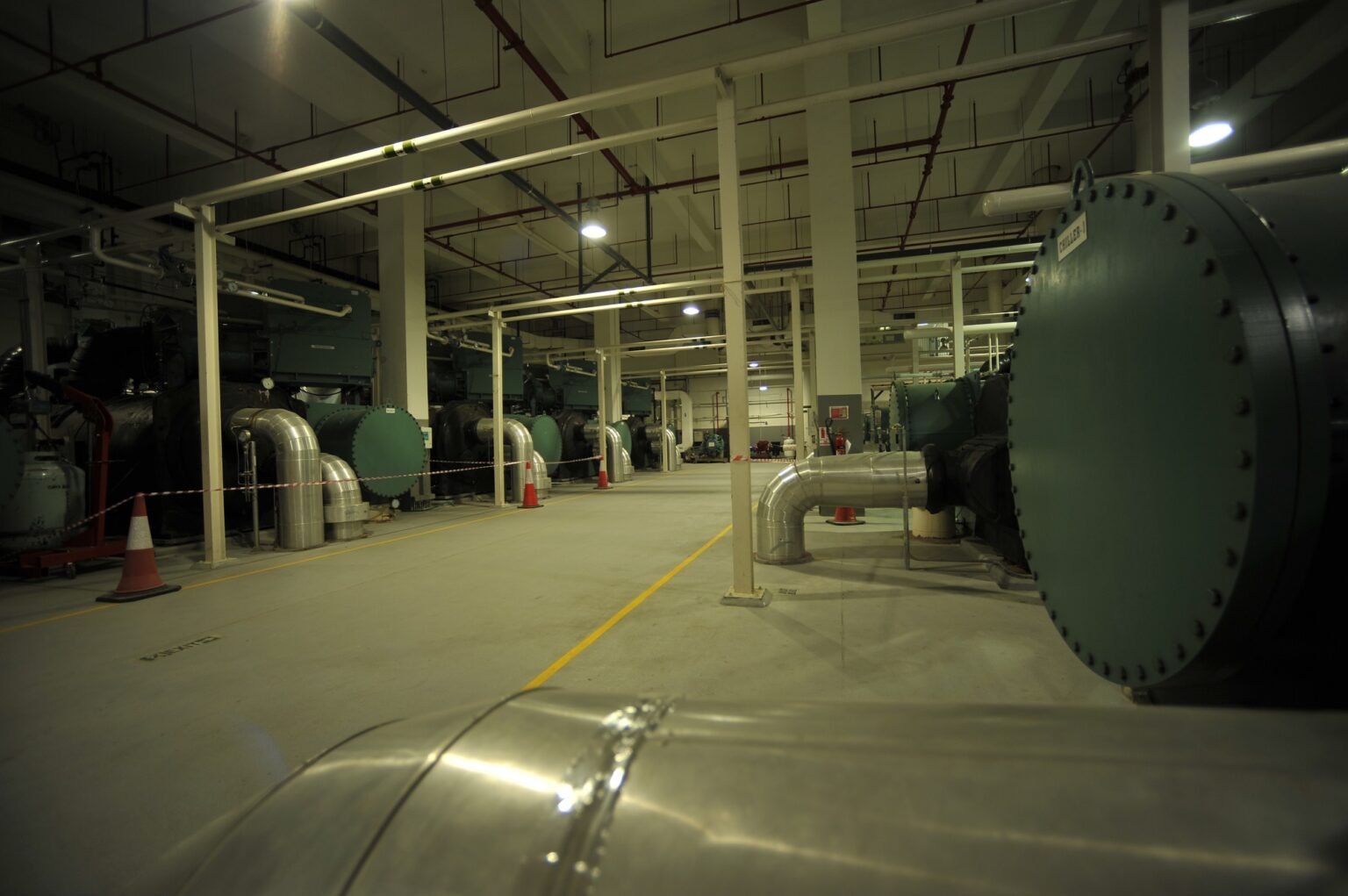
Close


District cooling can reduce electricity demand and avoids peak power expenses.
A district cooling system allows the building owner to eliminate their on-site chiller operation and maintenance. In turn reduces the cost of their utilities, eliminates the need to operate and maintain chillers and replace chillers at the end of their life cycles.
Because of the high efficiencies that district cooling systems operate at and their ability to utilize inexpensive or waste energy sources, the building owners can expect more stability in their energy costs and carbon footprint in the future.
District cooling systems are built with standby cooling capacity to ensure that cooling is always available at the central plant. Overall, the reliability provided by a district cooling system is greater than most buildings can achieve individually.
The development of a district cooling system is a response to the need to provide energy for the future in a manner that is consistent with the need to protect our environment.
The production of cooling from a centralized facility allows for improvements in energy conservation, and the astute use of fuel sources are the most cost-effective ways available, to reduce atmospheric emissions, global warming, and the release of ozone depleting gases.
The underlying principles adopted for district energy are to provide a cost effective, reliable, efficient, and environmentally friendly service which not only benefits the customer but also the public.
| Cookie | Duration | Description |
|---|---|---|
| cookielawinfo-checkbox-analytics | 11 months | This cookie is set by GDPR Cookie Consent plugin. The cookie is used to store the user consent for the cookies in the category "Analytics". |
| cookielawinfo-checkbox-functional | 11 months | The cookie is set by GDPR cookie consent to record the user consent for the cookies in the category "Functional". |
| cookielawinfo-checkbox-necessary | 11 months | This cookie is set by GDPR Cookie Consent plugin. The cookies is used to store the user consent for the cookies in the category "Necessary". |
| cookielawinfo-checkbox-others | 11 months | This cookie is set by GDPR Cookie Consent plugin. The cookie is used to store the user consent for the cookies in the category "Other. |
| cookielawinfo-checkbox-performance | 11 months | This cookie is set by GDPR Cookie Consent plugin. The cookie is used to store the user consent for the cookies in the category "Performance". |
| viewed_cookie_policy | 11 months | The cookie is set by the GDPR Cookie Consent plugin and is used to store whether or not user has consented to the use of cookies. It does not store any personal data. |